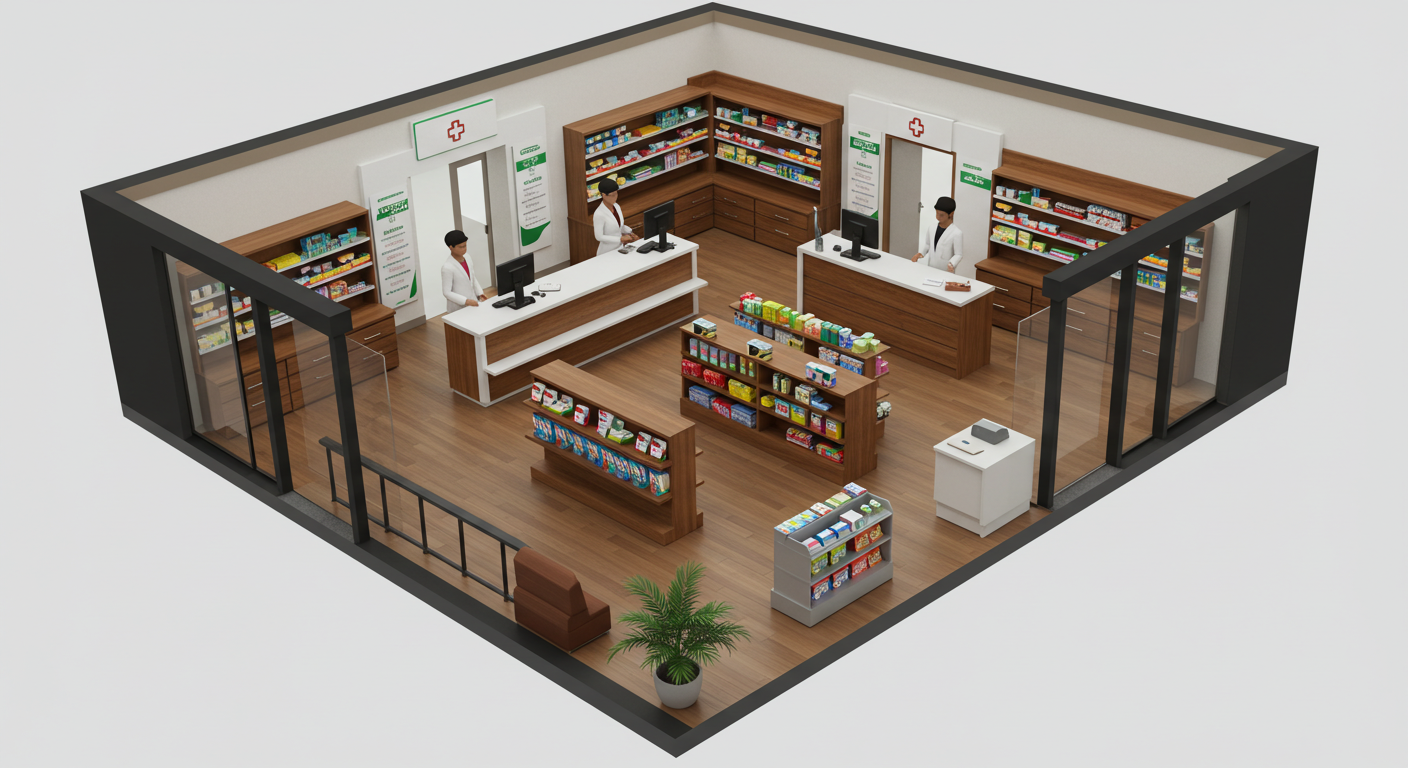Category: Inventory
-

Don’t let your pharmacy layout hurt sales! Design a floor plan that: Follows regulations but reflects your brand. Guides customers with clear flow and signage. Slows them down to browse with attractive displays. Uses the “right turn effect” to promote key products. Highlights impulse buys near the entrance.
-

New pharmacies face a stocking dilemma: enough supplies to attract customers, but not too much to avoid losses. Here’s how to impress first-time visitors: Know your market: Understand their needs and what sets you apart. Focus on OTC: Easier to manage stock and cater to a wider range of conditions. Work with nearby suppliers: Ensure…
-

Don’t just focus on long expiry dates! It can tie up your cash. Embrace data analysis to: – Identify slow-moving stock at risk of expiring. – Leverage short-expiry deals to boost profits (see liquidation platform link in full article). – Make data-driven decisions for your pharmacy’s success. Consider AI and outsourcing for efficient stock management.
-

Choosing pharmacy suppliers? Don’t risk product raids or cash flow issues! Key considerations: – Legally registered suppliers: Avoid unregistered sources to protect your business. – Supplier location: Consider lead time and impact on cash flow. – Local Technical Representatives (LTRs): Explore their offerings and pricing. – Start smart: Minimize debt to manage unforeseen challenges and…
-

Lead time in pharmacies refers to the duration from order initiation to product receipt. Factors like supplier processes and distance impact lead times. Longer lead times can frustrate customers and harm a pharmacy’s reputation. To minimize lead times, establish multiple supplier relationships, consider delivery speed, and streamline internal processes. Shortening lead times is crucial for…
-

Safety stock is crucial to prevent stockouts, acting as a buffer between forecasted quantities and demand levels. Calculating safety stock level for each item is vital, particularly for products with high demand variability. The formula for calculating safety stock and its linkage to the reorder point are key. Inaccurate forecasting and supplier challenges can impact…
-

The reorder level in your pharmacy determines when to order from suppliers, not the quantity. Calculating it prevents under/overstocking. The formula is Reorder Level = (Lead Time x Average Daily Consumption) + Safety Stock. Accurate levels boost cash flow, manage demand variability, and enhance customer loyalty. Consider challenges such as demand variables and economies of…
-

The XYZ analysis refines the ABC framework by considering product demand variations at your pharmacy. It helps reduce the risk of overstocking, improve forecasting accuracy, and lower inventory costs. Category X products have low demand variability (<10%), category Y has moderate variability (10-30%), and category Z has the highest variability. Combining XYZ with ABC gives…
-

ABC analysis is a vital inventory management system for pharmacies to prioritize products based on their impact on revenue. Grade A products drive 80% of revenue but require tight control to avoid expiries. Grade B items are of moderate value and Grade C items contribute the least to revenue and are prone to expiries. Continuous…
-

Annually, over 2 billion USD worth of pharmaceuticals go to waste worldwide, affecting supply chains and risking lives. Proper inventory management, including labeling and redistribution, can minimize waste and benefit the community, environment, and pharmacy finances. Kenya, for instance, has specific procedures and costs for pharmaceutical waste disposal. Embracing labeling systems can help pharmacies reduce…
